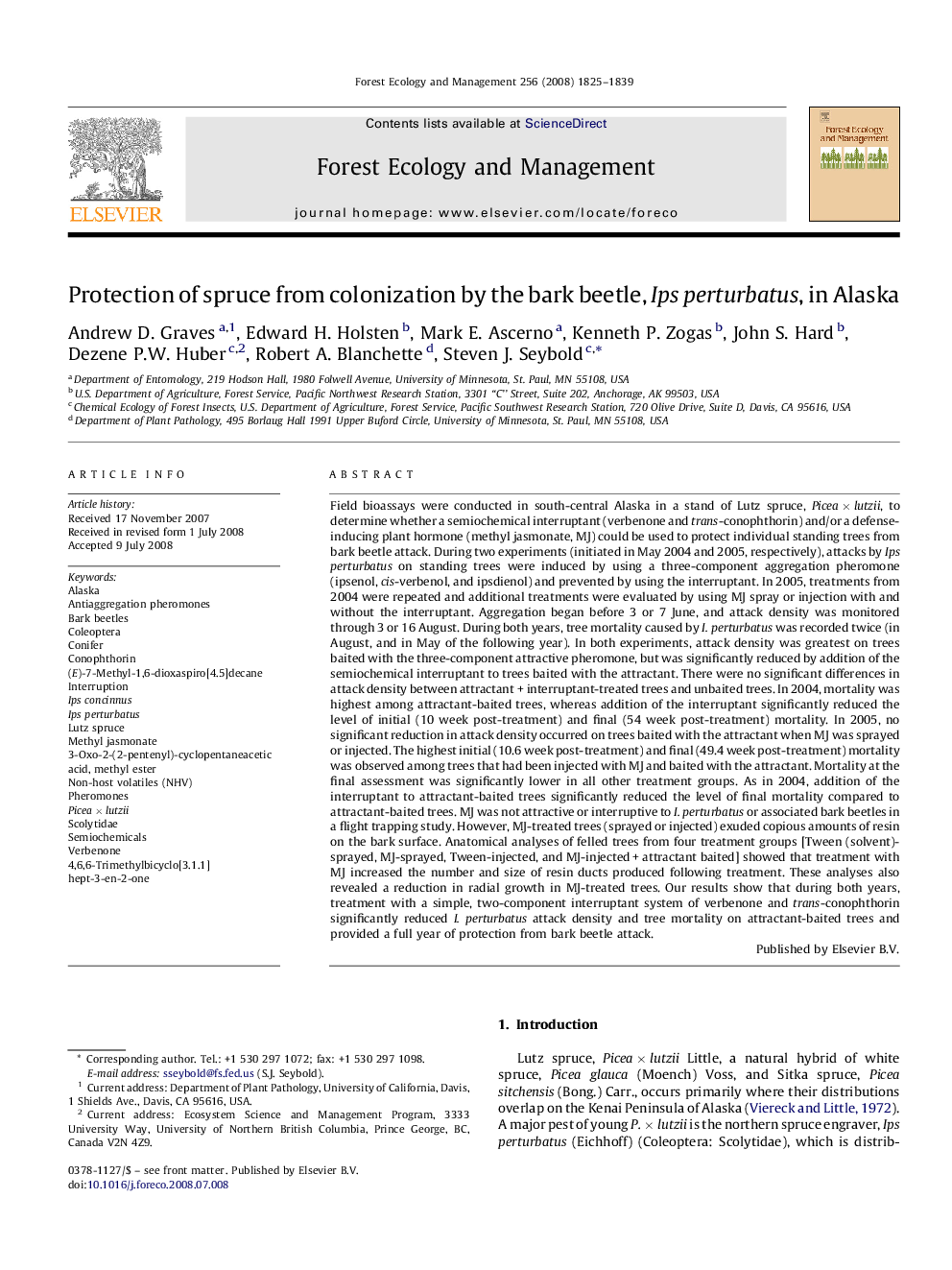| کد مقاله | کد نشریه | سال انتشار | مقاله انگلیسی | نسخه تمام متن |
|---|---|---|---|---|
| 88682 | 159315 | 2008 | 15 صفحه PDF | دانلود رایگان |

Field bioassays were conducted in south-central Alaska in a stand of Lutz spruce, Picea × lutzii, to determine whether a semiochemical interruptant (verbenone and trans-conophthorin) and/or a defense-inducing plant hormone (methyl jasmonate, MJ) could be used to protect individual standing trees from bark beetle attack. During two experiments (initiated in May 2004 and 2005, respectively), attacks by Ips perturbatus on standing trees were induced by using a three-component aggregation pheromone (ipsenol, cis-verbenol, and ipsdienol) and prevented by using the interruptant. In 2005, treatments from 2004 were repeated and additional treatments were evaluated by using MJ spray or injection with and without the interruptant. Aggregation began before 3 or 7 June, and attack density was monitored through 3 or 16 August. During both years, tree mortality caused by I. perturbatus was recorded twice (in August, and in May of the following year). In both experiments, attack density was greatest on trees baited with the three-component attractive pheromone, but was significantly reduced by addition of the semiochemical interruptant to trees baited with the attractant. There were no significant differences in attack density between attractant + interruptant-treated trees and unbaited trees. In 2004, mortality was highest among attractant-baited trees, whereas addition of the interruptant significantly reduced the level of initial (10 week post-treatment) and final (54 week post-treatment) mortality. In 2005, no significant reduction in attack density occurred on trees baited with the attractant when MJ was sprayed or injected. The highest initial (10.6 week post-treatment) and final (49.4 week post-treatment) mortality was observed among trees that had been injected with MJ and baited with the attractant. Mortality at the final assessment was significantly lower in all other treatment groups. As in 2004, addition of the interruptant to attractant-baited trees significantly reduced the level of final mortality compared to attractant-baited trees. MJ was not attractive or interruptive to I. perturbatus or associated bark beetles in a flight trapping study. However, MJ-treated trees (sprayed or injected) exuded copious amounts of resin on the bark surface. Anatomical analyses of felled trees from four treatment groups [Tween (solvent)-sprayed, MJ-sprayed, Tween-injected, and MJ-injected + attractant baited] showed that treatment with MJ increased the number and size of resin ducts produced following treatment. These analyses also revealed a reduction in radial growth in MJ-treated trees. Our results show that during both years, treatment with a simple, two-component interruptant system of verbenone and trans-conophthorin significantly reduced I. perturbatus attack density and tree mortality on attractant-baited trees and provided a full year of protection from bark beetle attack.
Journal: Forest Ecology and Management - Volume 256, Issue 11, 20 November 2008, Pages 1825–1839